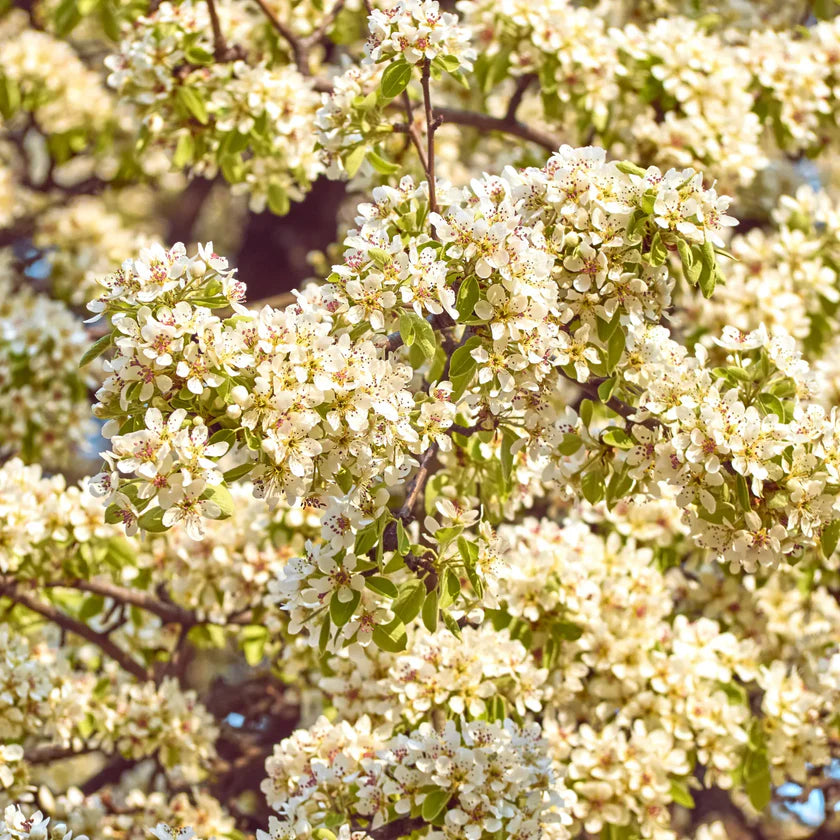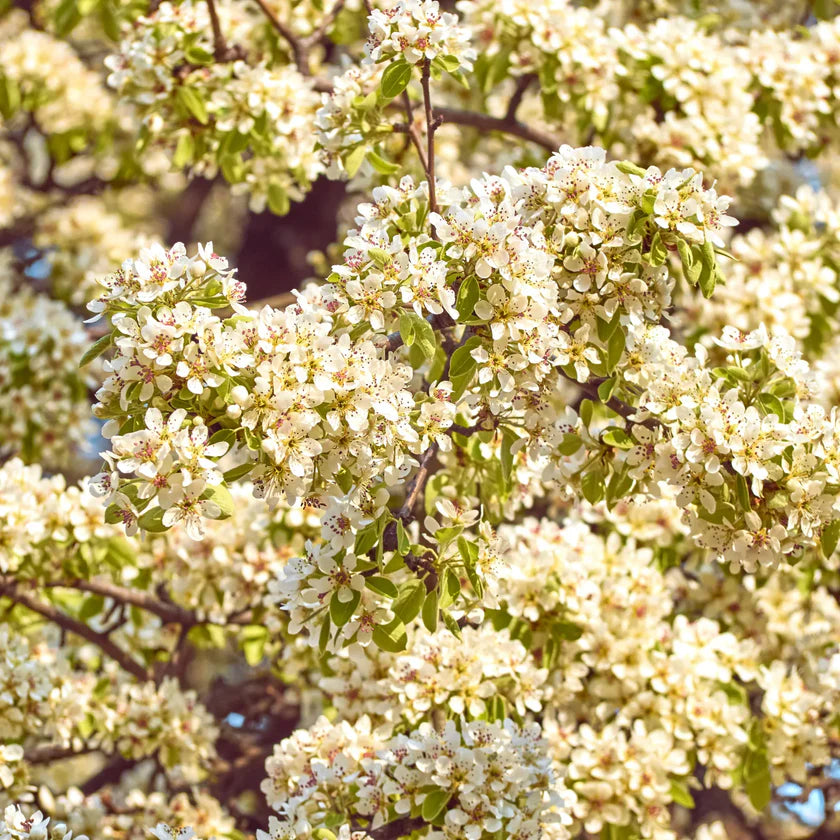Cleveland Pears - 2/2.5 inch
Cleveland Pears - 2/2.5 inch
Low stock: 3 left
Full sun and Partial shade
Couldn't load pickup availability
Cleveland Pear Tree (Pyrus calleryana 'Cleveland Select')
Description:
The Cleveland Pear Tree (Pyrus calleryana 'Cleveland Select') is a standout ornamental tree, cherished for its flawless, symmetrical shape and year-round beauty. In early spring, it bursts into a profusion of pure white blossoms, followed by glossy green, heart-shaped leaves that provide dense shade through summer. In fall, the foliage transforms into a spectacular display of red, orange, and purple hues. Unlike the Bradford Pear, Cleveland Pear is stronger, more resilient to wind and ice, and less prone to branch splitting. Its upright, oval form makes it perfect for lining driveways, walkways, or as a striking specimen in smaller landscapes. This tree is low-maintenance, fast-growing, and highly adaptable to various soil types and urban conditions.
Plant Characteristics:
-
Botanical Name: Pyrus calleryana 'Cleveland Select'
-
Common Names: Cleveland Pear, Cleveland Select Pear, Flowering Pear
-
Type: Deciduous ornamental tree
-
Mature Height: 25–40 feet
-
Mature Spread: 15–20 feet
-
Growth Habit: Upright, oval to pyramidal, symmetrical
-
Foliage: Glossy dark green, heart-shaped; turns red, orange, and purple in fall
-
Flower Color: White, in dense clusters (early spring)
-
Bloom Time: Early spring
-
Fruit: Small, inedible or minimal (not messy)
-
Light Requirements: Full sun (tolerates partial shade)
-
Soil: Adaptable; prefers well-drained, moist soil but tolerates clay, loam, and a range of pH
-
Water Needs: Moderate; drought tolerant once established
-
Hardiness Zones: USDA 5–9
-
Maintenance: Very low; prune only to remove dead or damaged branches
-
Resistances: Disease resistant (especially fire blight), wind and ice tolerant, urban tolerant
-
Wildlife: Flowers attract pollinators; small fruit may attract birds
-
Uses: Street tree, specimen, driveway or walkway border, urban landscapes, small yards

